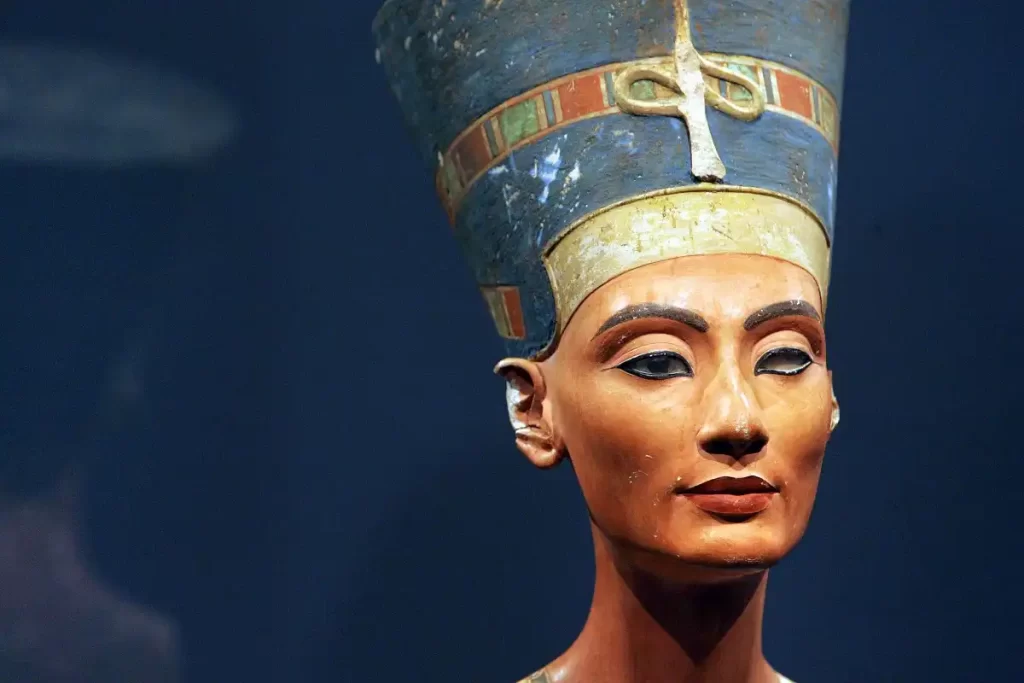
Queen Nefertiti
[ez-toc]
Who is Queen Nefertiti?
She was one of the queens in the 18th dynasty of ancient Egypt and held a number of titles throughout her life, including the lady of grace, great of praises, mistress of upper and Lower Egypt, the lady of the two lands, main king’s wife, and the beloved of Akhenaten. Queen Nefertiti is known to be one of the most well-known, beautiful, and powerful queens in the history of ancient Egypt. Her name means “Beautiful Woman Has”.
When Did Queen Nefertiti Get the Throne of Egypt?
She began her legacy as the wife of Pharaoh Akhenaten (1353–1336 BC), who ascended to the throne of Egypt following the death of his father Amenhotep III when she was only 15 years old. She ruled alongside her husband, who was also roughly her own age, and some people believe she was from a foreign country—possibly Syria—while others think she was the daughter of a high official named Ay.
What Did Queen Nefertiti Do with Her Husband?
When her husband tried to convert Egypt’s polytheistic religious system to a monotheistic one, Queen Nefertiti stood behind him. She changed her name to Neferneferuaten, which means the “Beautiful of Aton,” and relocated with him to his new capital Akhetaton in El-Amarna. He converted the worship of Amun to the new, sole god Aton, “The Sun Disk.” She and her husband co-ruled Egypt, and several wall murals, ornaments, and artifacts depict them sitting on the throne and donning crowns. The most well-known of her six daughters by Akhenaten was Ankhesenpaaten, who wed Tutankhamun, her half-brother.
The End of Her Life
After the twelfth year of Akhenaten’s tenure, Queen Nefertiti at some time vanished from view, and her daughter Merritt Aton assumed the throne of Egypt. Her condition at death, which has virtually vanished from historical archives, is likewise the subject of intense controversy. There are two mummies in the Valley of the Kings with the names “The Elder Lady” and “The Younger Lady,” and although one of them is thought to be Nefertari’s actual body, no one is certain which one, and hence the site of her tomb is a complete mystery.
The Famous Bust of Nefertiti
The Nefertiti Bust is a carving of Nefertiti’s lovely face made of painted limestone covered in stucco. This artifact, which was created in 1345 B.C. by the renowned sculptor Thutmose, was discovered at his Aten Amarna workshop in 1912 by a German archaeologist by the name of Ludwig Borchardt and is now kept in the Berlin Museum. It is incredibly significant and well-known for its alluring beauty as well as for showing how adept the ancient Egyptians were at creating realistic facial proportions and using artistic expression and techniques.



